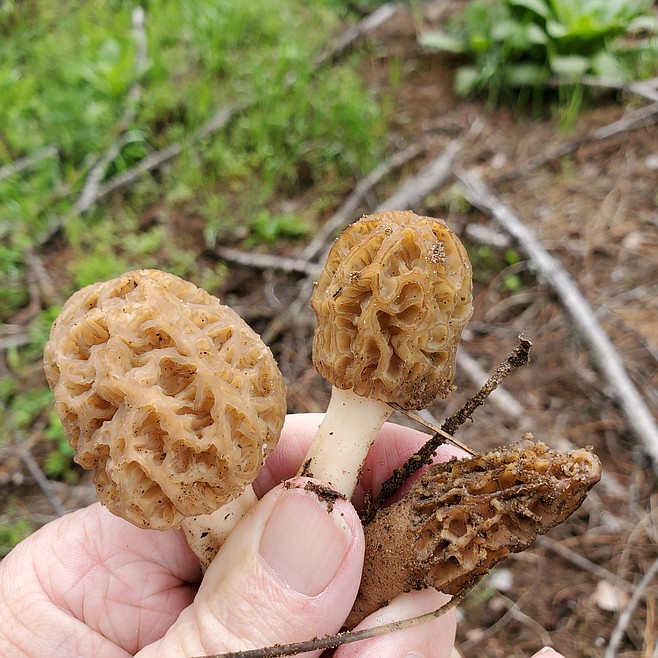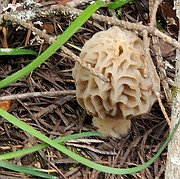It’s morel mushroom hunting season
“Hunting morels is like bass fishing. You cover ground until you find one, then slow down and search the area carefully. Concentrate the rest of your hunt on similar areas, on the theory that you’ve found the “pattern” for the day ...” — Field and Stream Magazine by Phil Bourjaily
Weird but wonderful, the morel mushroom (Morchella esculenta) — also known as yellow morel, haystack or sponge morel — makes its appearance for a very short season each year in mid to late spring. This incredibly tasty member of the mushroom family is all but impossible to propagate, so in order to get a basket full you either have to know how to forage for them yourself or know someone who does.
First, the weather is important. I have heard that some people begin to look for morel mushrooms after they notice dandelions going to seed. After that, the best foraging will be had when there’s been a good rain followed by a day or two of warm sunshine.
Look in wooded areas, particularly near a river or stream bank, underneath dead or dying trees. Also, be sure to use a knife to cut off the morels above ground at the stem — yanking them up can harm the underground mycelium, and damage your mushroom spot for the future.
Hunting morels will probably require a trek through thick woods, so make sure you have bug spray, are dressed in long sleeves and pants, and check for ticks when you’re done. Also, as always with mushrooms, make sure to have someone who knows about mushroom identification check over your haul before you eat them. Morels are fairly distinctive, but still … better to be safe than sorry!
Where morel mushrooms appear, is a challenge for those new to seeking the sponge-like fungi ... and for those veterans who cannot find them. Morels appear and disappear suddenly and randomly. Mushroom hunting morale can suffer when the weather and woods seem perfect, but no morels are found.
It is recommended that morel hunts be a fun outing for families. Keeping it fun for children (and restless grownups) increases the chances of finding morels, while it also helps connect them with other wonders nature offers. Here’s some morale-booster tactics for families, but ones that can also be adapted to the solo mushroom hunter.
1. Plan the trip as a spring walk to see what is growing outdoors. Don’t make finding morels a make-or-break success point of the outing. Make them a bonus. But take along a collection sack just in case.
2. Pack snacks and drinking water. Take a break in scenic spots to enjoy snacks. Sometimes sitting still is when focus zeros in on morels, which have colors and shapes that let them seemingly hide in plain sight on a forest floor. A snack and time to explore nature can make the outing a success for children, regardless of morels.
3. A camera is a wonderful item to bring with you when foraging. These days most smartphones have excellent cameras already included. Photos are also a great way to share your outing and any cool things you may see.
4. Morels live in and on the edge of forested areas. Look for trees, around which morels often grow. Early in the spring as the ground is warming, you’ll find them on south-facing slopes in fairly open areas. As the season progresses, go deeper into the woods and onto north-facing slope.
The No. 1 secret to finding morels is to make looking for them part of your outdoor experience. Keep looking for morels from now to the end of the season and don’t let them get your morale down.
Good luck, have fun, and good eating!



